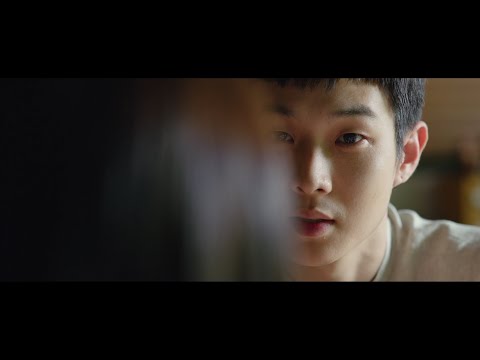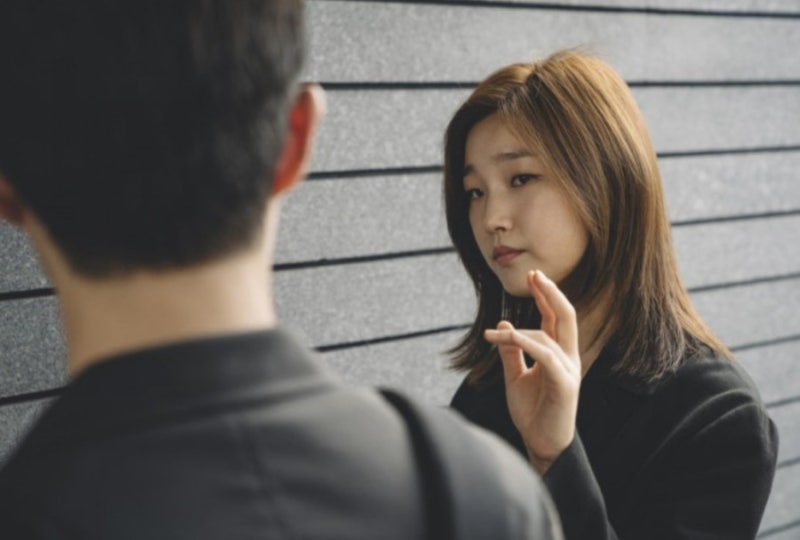기생충 키스신
기생충 키스신 (Kiss Scene) is one of the most talked about scenes from the Academy Award-winning movie Parasite. Directed by Bong Joon-ho, the film’s deeply intricate exploration of human relationships has been praised by critics and audiences alike. In this article, we will take a closer look at the meaning of 키스신 in the context of the movie as well as its cultural significance and impact.
키스신: 기생충의 의미
The 키스신 scene in Parasite takes place between the two main characters, Ki-woo and Da-hye, while they are sitting on the couch. The scene is shot in a way that emphasizes the intimacy and intensity of the moment, while the background music adds to the overall tension.
The significance of this scene lies in the fact that it highlights the theme of trust and suspicion that runs throughout the movie. Ki-woo, who is the son of a poor family, is pretending to be someone he is not in order to infiltrate the wealthy Park family’s household. Da-hye, who is the daughter of the Parks, is also hiding secrets of her own.
In the context of the movie, the 키스신 scene represents a moment of vulnerability and trust between two characters who are otherwise at odds with each other. It also exposes the complexity of human relationships and the levels of suspicion and trust that exist between people.
감독 봉준호의 메시지
Bong Joon-ho, the director of Parasite, has been hailed for his ability to explore complex social issues through his movies. With Parasite, he has once again not only highlighted the class divide that exists in Korean society but also crafted a riveting thriller that keeps audiences on the edge of their seats.
The movie’s message is clear – the gap between the rich and poor is widening, and the struggle for survival has become more intense. Bong Joon-ho has used his craft to explore the hidden tensions and dark underbelly of Korean society, and his message has resonated with audiences around the world.
믿음과 의심: 인간관계의 복잡성
The 키스신 scene in Parasite underscores the complexity of human relationships and the interplay of trust and suspicion that exists between people. The scene takes place between Ki-woo and Da-hye, two characters who are otherwise at odds with each other. The fact that they are able to share a moment of intimacy is a testament to the intricate dynamics that shape human relationships.
In the movie, the various characters are constantly lying and keeping secrets from each other. This creates a tension-filled atmosphere where the slightest misstep can have disastrous consequences. The 키스신 scene represents a rare moment of honesty and vulnerability in a world where deception is the norm.
상류와 하류: 사회적 계층 구분과 갈등
Parasite has been celebrated for its exploration of the class divide that exists in Korean society. The movie contrasts the life of the wealthy Park family with the struggling Kim family, who are barely able to make ends meet. The 갈등 (conflict) that arises between the two families sets the stage for the movie’s tense and thrilling storyline.
The 키스신 scene, in which Ki-woo and Da-hye briefly transcend the class divide between them, is a moment of hope in an otherwise bleak situation. It represents the possibility of breaking down barriers and building new relationships across class lines.
집단과 개인: 가족의 의미와 유효성
The movie Parasite is centered around the Kim family, who are struggling to survive in a society that has little regard for their well-being. The family’s dynamics are complex, with each member playing a role in the overall scheme of things. They are able to function as a unit, even in difficult circumstances.
The 키스신 scene is significant because it highlights the bond between Ki-woo and his sister Ki-jeong, who has helped him to infiltrate the Park family’s household. The moment of intimacy between Ki-woo and Da-hye is facilitated by Ki-jeong, who has provided him with the means to get close to her.
The scene represents the importance of family and the role it plays in enabling individuals to thrive and succeed. Despite their precarious position in society, the Kim family is able to support and care for each other in a way that gives them strength and resilience.
성장과 변화: 기생충이 보여주는 인생의 단계
One of the central themes of Parasite is the idea of growth and change. The movie’s characters are constantly evolving, adapting to new situations and learning from their mistakes. The 키스신 scene is just one example of the various moments of growth and transformation that take place throughout the movie.
Ki-woo, who is initially portrayed as a naive and innocent teenager, undergoes a dramatic transformation over the course of the movie. The experience of infiltrating the Park family’s household exposes him to a world that is vastly different from his own. The 키스신 scene represents a moment of awakening for him, where he realizes the complexity of his situation and the implications of his actions.
In many ways, Parasite is a movie about the different stages of life and the challenges that come with each one. The 키스신 scene is a powerful reminder of the transformative power of human connection, even in the midst of difficult circumstances.
문화적 차이와 함께하는 인터내셔널 요소
Parasite has achieved global success, winning multiple awards and becoming the first non-English language movie to win the prestigious Best Picture award at the Oscars. The movie’s exploration of social issues that are unique to Korean society has resonated with international audiences, sparking conversations about the class divide and the challenges faced by marginalized communities worldwide.
The 키스신 scene is an example of the universal themes that are present in Parasite, despite its Korean roots. The complex dynamics of trust and suspicion that exist between people transcend cultural boundaries and are relevant to audiences everywhere. The movie has proved to be a powerful reminder of the commonalities that exist between us, even as we navigate the differences that set us apart.
기생충 시계방향, 기생충 소파신, 기생충 다시보기, 기생충 시간, 최우식 기생충, 기생충 연기, 정지소기생충 키스신
기생충 시계방향 (Parasite Clockwise) refers to the metaphorical representation of the class divide by the use of clockwise and counterclockwise movements in different scenes. The wealthy Park family moves in a clockwise direction, while the Kim family moves counterclockwise, illustrating the stark contrast between the two groups.
기생충 소파신 (Parasite Sofa Scene) is a reference to the famous scene in the movie where the Kim family hides under the Park family’s coffee table while they engage in intimate conversations on the sofa. The scene is a powerful illustration of the class divide and the ways in which the Kim family must hide in order to survive.
기생충 다시보기 (Parasite Re-watch) is a common theme among fans of the movie, who have been unable to resist the urge to watch it multiple times. The movie’s many layers and complexities make it an endlessly fascinating work of art that requires multiple viewings to fully appreciate.
기생충 시간 (Parasite Time) refers to the way in which time functions differently for the different characters in the movie. The wealthy Park family has an abundance of free time, while the Kim family is constantly struggling to make ends meet. The movie explores the ways in which time is a precious commodity that is distributed unequally in society.
최우식 기생충 (Song Kang-ho Parasite) refers to the award-winning actor who played the role of Ki-taek in the movie. Song Kang-ho is a beloved figure in Korean cinema, known for his versatile acting skills and ability to bring depth and complexity to his roles.
기생충 연기 (Parasite Acting) refers to the outstanding performances by the movie’s cast, who brought their characters to life in a way that was both captivating and realistic. The movie’s actors have been praised for their ability to convey the complexities of their characters’ emotions and motivations.
정지소기생충 키스신 (Parasite Jessica’s Kiss Scene) is another notable scene in the movie, where Jessica (Ki-jeong) kisses her male classmate to distract him from a plan to expose her family’s deception. The scene is yet another illustration of the complex dynamics of trust, suspicion, and manipulation that exist between the movie’s characters.
FAQs:
What is the significance of the 키스신 scene in Parasite?
The 키스신 scene represents a moment of vulnerability and trust between two characters who are otherwise at odds with each other. It also exposes the complexity of human relationships and the levels of suspicion and trust that exist between people.
What is Bong Joon-ho’s message in Parasite?
The movie’s message is clear – the gap between the rich and poor is widening, and the struggle for survival has become more intense. Bong Joon-ho has used his craft to explore the hidden tensions and dark underbelly of Korean society, and his message has resonated with audiences around the world.
How does Parasite explore the class divide in Korean society?
The movie contrasts the life of the wealthy Park family with the struggling Kim family, who are barely able to make ends meet. The 갈등 (conflict) that arises between the two families sets the stage for the movie’s tense and thrilling storyline.
Why has Parasite achieved global success?
The movie’s exploration of social issues that are unique to Korean society has resonated with international audiences, sparking conversations about the class divide and the challenges faced by marginalized communities worldwide. The movie has proved to be a powerful reminder of the commonalities that exist between us, even as we navigate the differences that set us apart.
How does time function differently for the different characters in Parasite?
The wealthy Park family has an abundance of free time, while the Kim family is constantly struggling to make ends meet. The movie explores the ways in which time is a precious commodity that is distributed unequally in society.
사용자가 검색한 키워드: 기생충 키스신 기생충 시계방향, 기생충 소파신, 기생충 다시보기, 기생충 시간, 최우식 기생충, 기생충 연기, 정지소
Categories: Top 18 기생충 키스신
기생충 최우식 연기모음
여기에서 자세히 보기: future-user.com
기생충 시계방향
The significance of the clockwise direction can be interpreted in different ways. One interpretation is that it represents the cyclical nature of poverty and the class divide. The Park family, who represent the upper class, live in a luxurious and spacious house that is the center of these circular movements. Meanwhile, the Kim family, who represent the lower socioeconomic class, live in a small, cramped basement apartment. Their movements are confined and seem aimless in comparison to the circular movements of the Park family members. The clockwise direction symbolizes the endless cycle of wealth and poverty, where the rich get richer and the poor get poorer.
Another interpretation is that the clockwise motion signifies the loss of control and powerlessness. The Kim family’s attempts to infiltrate the Park family’s household are always accompanied by clockwise movements, implying their inability to break free from the forces and structures that oppress them. When Ki-woo first comes to the Park house to interview for the tutor position, he is shown walking clockwise around the living room, trying to appear confident and in control of the situation, even as he is clearly out of his depth. When the Kim family gets trapped in the hidden bunker beneath the house, they are shown frantically running in a clockwise circle, unable to escape their fate.
Furthermore, the clockwise direction can be seen as a means of ratcheting up the tension in the movie. The circular motions create a sense of repetition and inevitability, suggesting that things are spiraling out of control and disaster is imminent. This is most obvious in the scene where the Kim family is hiding under the coffee table while the Park family has a drunken conversation above them. The camera circles around the table, increasing the tension until the inevitable happens and the trampling of the table leads to the Kims’ exposure.
The use of the circular motif throughout the movie is also an indication of Bong Joon-ho’s directorial prowess. He uses this theme in creative ways, sometimes subtly and sometimes overtly. For example, in one scene, when Ki-woo is walking around the mansion, he hears a noise that prompts him to turn around, and the camera follows his head movement in a clockwise motion to reveal that it was just the housekeeper’s husband hiding in the corner. This movement of the camera not only helps to build tension but also allows for a seamless transition from one shot to another.
When the movie was released in 2019, the clockwise direction immediately garnered attention, and it soon became a talking point among moviegoers and critics alike. Many praised it for its innovative use of visual storytelling and its ability to convey the themes of the movie in a subtle yet powerful way. Some viewers even started to look for hidden meanings in other movies that use circular patterns, such as The Shining and The Exorcist.
The Parasite’s Clockwise Direction has also become popular on social media, spawning numerous memes and online discussions. Fans have created GIFs that isolate the clockwise movements and have set them to music or added captions, highlighting the humor and irony of the situation.
FAQs
1. Does the clockwise direction have any significance culturally or symbolically in Korea?
There is no inherent cultural or symbolic meaning attached to the clockwise direction in Korean culture. However, circular patterns and movements are often used in Korean art and design, such as in traditional paintings and pottery.
2. Are there any other movies or TV shows that use circular patterns or movements as a visual motif?
Yes, there are other movies and TV shows that use circular patterns or movements to create a sense of repetition or inevitability. Some examples include The Shining, The Exorcist, and the TV show Twin Peaks.
3. How has the Parasite’s Clockwise Direction influenced other films or filmmakers?
The Parasite’s Clockwise Direction has inspired other filmmakers to experiment with visual storytelling and to incorporate circular patterns and movements into their work. It has also become a popular reference point for movie critics and enthusiasts when discussing similar techniques in other movies.
4. What other cinematographic techniques did Bong Joon-ho use to create tension in the movie?
In addition to the Parasite’s Clockwise Direction, Bong Joon-ho uses other techniques, such as the use of contrast lighting and close-ups, to create tension and suspense. He also incorporates elements of black comedy and satire to undercut the seriousness of the themes in the movie.
기생충 소파신
The term “Parasite Sofa Sin” is derived from a scene in the movie where the poor family discovers a hidden room in the wealthy family’s home that is located underneath a sofa. The scene has since become iconic and sparked a national conversation about the housing crisis in Korea.
Why is this phenomenon happening?
One of the main reasons for the rise of the Parasite Sofa Sin phenomenon is the housing affordability crisis in Korea. Many young people in Korea are struggling to find affordable housing due to skyrocketing housing prices and a lack of rental options. In Seoul, for example, the average rent for a one-room apartment can cost up to 1,000,000 KRW (approximately $850 USD) per month, which is unaffordable for many young people.
As a result, some people have resorted to occupying hidden spaces in other people’s homes as a way to save money on rent. They often do so by subletting rooms or by secretly occupying unused spaces, such as storage rooms or basements. Some people even go so far as to construct hidden rooms or passages in their homes that they can use to sneak into other people’s homes.
The rise of the sharing economy and apps like Airbnb have also contributed to the Parasite Sofa Sin phenomenon. Many people who own homes and apartments in Korea use Airbnb to generate extra income by renting out their spaces to tourists. However, this has led to some people exploiting the sharing economy by renting out their properties to long-term tenants without informing the original owners.
What are the risks and dangers of the Parasite Sofa Sin phenomenon?
The Parasite Sofa Sin phenomenon poses several risks and dangers for both the people who occupy the hidden spaces and the homeowners. For the occupants, the living conditions are often cramped and unsanitary, and they may not have access to basic necessities like running water or ventilation. They are also at risk of being discovered by the homeowner or by law enforcement, which can lead to legal consequences.
For the homeowners, the risks are also significant. They may not be aware that someone is occupying their home, which can lead to damage or theft of their property. They also run the risk of being held liable for any accidents or injuries that may occur as a result of the occupants’ living conditions.
In addition to the physical risks and dangers, the Parasite Sofa Sin phenomenon also highlights the social and economic inequalities that exist in Korea. The fact that so many young people are unable to afford basic housing in a developed country like South Korea is a testament to the systemic problems that plague the economy.
What is being done to address the housing crisis in Korea?
The Parasite Sofa Sin phenomenon has sparked a national conversation about the housing crisis in Korea, and many lawmakers and activists are pushing for solutions to address the problem. One of the main proposals is to increase the supply of affordable housing by constructing more public housing units and increasing subsidies for renters.
Another proposal is to regulate the sharing economy to prevent people from exploiting Airbnb and other sharing platforms to rent out homes and apartments illegally. This would help protect both homeowners and renters and ensure that everyone is paying their fair share of taxes and following safety regulations.
Finally, there is a growing movement to address the underlying economic issues that contribute to the housing crisis, such as stagnant wages and income inequality. This would require significant policy changes and a reimagining of the role of government in the economy, but it is an essential step in ensuring that everyone in Korea has access to safe and affordable housing.
FAQs
Q: Is the Parasite Sofa Sin phenomenon legal?
A: No, occupying someone else’s property without their permission is illegal in Korea.
Q: How can I prevent someone from occupying my home without my knowledge?
A: It’s essential to be vigilant and to regularly check your property for any signs of unauthorized entry or occupancy. You can also invest in security systems and locks to prevent unwanted access to your home.
Q: What should I do if I discover that someone is occupying my home without my permission?
A: You should contact the police immediately and report the intrusion. They can help you remove the occupants and take legal action if necessary.
Q: What are the long-term consequences of the housing crisis in Korea?
A: The housing crisis in Korea has significant social and economic consequences, including rising inequality, a lack of social mobility, and a decrease in the quality of life for many people. It will require significant policy changes and a reimagining of the economy to address these issues.
기생충 다시보기
Bong Joon-ho’s latest masterpiece, the award-winning film “기생충” (Parasite) was a massive cultural phenomenon upon its 2019 theatrical release. The film garnered a global audience, universal critical acclaim, and the highest recognition at the 92nd Academy Awards, where it won four Oscars. In Korea, the film became a cultural milestone, earning the status of a unique cinematic achievement that spoke to the social and political issues of contemporary Korean society.
“기생충” is a social thriller that challenges class inequality, the struggles of the working-class, the corrupted nature of capitalism, and the consequences of socio-economic gaps in modern-day Korea. The film depicts two families, the working-class Kims, and the wealthy Parks, and their interwoven lives generating astonishing results. The film captured the zeitgeist of contemporary Korea and raised awareness about the realities of class disparity, spurring various discussions on social reformation.
Now, with its re-release on streaming platforms, “기생충 다시보기” (meaning to watch Parasite once again), audiences can revisit the experience of witnessing one of Bong Joon-ho’s most iconic works in Korea’s cinematic history. In this article, we will delve into what makes Parasite so special and why its re-streaming transcends mere entertainment.
The Relevance of Parasite and Its Impact on Korean Society
Since its initial release, “기생충” has become a worldwide cultural phenomenon, generating serious discussions on social and economic issues, not only in Korea but globally. The film’s take on class disparity is an undoubtedly relevant issue as it is something the world continually grapples with, and Korea is no exception. In 2020, the Gini index, a metric for measuring income and wealth inequality, ranked Korea as one of the highest among OECD countries. This economic stratification generates severe social issues, such as poverty, depression, and even violence or crime, just as depicted in the film.
“기생충” strongly resonated among Koreans, from all corners of society that have experienced firsthand, or through their families, the hardships and inequality presented in the film. The class struggle narrative resonates particularly among younger generations who are placed in an environment with high competition and a low job market. The film, in a sense, provided them with a glimpse of hope that their voices and plights are being heard and represented in the media and eventually in society.
Parasite’s influence beyond Korean borders is also evident. The commentary on capitalism and its dark side, which includes economic and social inequality, speaks to people worldwide who find themselves battling a similar issue. “기생충” is that rare masterpiece that is both culturally specific and universally relatable, sparking lively discussions and debates on a plethora of themes and motifs.
Parasite’s Return: Why Re-Stream 기생충 다시보기?
Streaming services have not only revolutionized how audiences consume media, but it has also opened new opportunities for directors and producers. Re-releasing a film on a streaming platform is one way to expand its audience reach, as many people may have missed the opportunity to watch “기생충” in theatres.
The re-streaming of “기생충 다시보기” comes at an opportune time, as the world is still grappling with the aftermath of the global pandemic—people are staying indoors and streaming services are more in demand than ever. For those who’ve watched “기생충” in theatres, it’s an opportunity to revisit and re-experience the film’s brilliant storytelling and cinematic flair, all from the comfort of their homes.
A Deeper Look at 기생충 다시보기
While the experience of “기생충 다시보기” differs from that of watching the film in theatres, the latter of which has the advantage of a larger screen and a room full of people, it still offers a unique and intimate experience. The streaming platform offers subtitles in various languages, making the film accessible to a more comprehensive audience, from non-Korean speaking viewers worldwide.
Revisiting “기생충” via the streaming platform also allows for a deeper appreciation for its symbolism, subtle references, and underlying themes. Re-watching the film in a more private setting permits the audience to pick up on the details they may have missed on the big screen. For those who have yet to watch the film, the streaming platform’s extended availability provides a chance to enjoy it without the boundary of time constraints or movie theatre schedules.
FAQs about 기생충 다시보기
1. How do I watch 기생충 다시보기?
Viewers can watch “기생충 다시보기” by streaming the movie on various platforms. The streaming platforms that offer “기생충” include Netflix, Hulu, Amazon Prime, Viki, and CuriosityStream.
2. Why is the re-streaming important?
The re-streaming of “기생충” allows more people to watch the iconic film and experience its brilliant storytelling and cinematic flair, all from the comfort of their homes.
3. What is the film 기생충 about?
“기생충” depicts two families, the working-class Kims and the wealthy Parks, and their interwoven lives generating astonishing results. The film raises awareness about the social and political issues of contemporary Korean society, such as class inequality, the struggles of the working class, and the corrupted nature of capitalism.
4. What language is it in, and does it have subtitles?
The film is in Korean, with subtitles available in various languages, making it accessible to a wider international audience.
5. Why did 기생충 become such a cultural phenomenon?
“기생충” addresses issues that affect contemporary Korean society, such as dramatic economic inequality and corruption, in an engaging and thought-provoking manner that resonated with audiences worldwide. Its uniqueness attracted an international audience, earning critical acclaim and numerous accolades, including the highest recognition at the 92nd Academy Awards.
In conclusion, “기생충 다시보기” is a unique opportunity for people worldwide to revisit one of the most culturally transformative films in recent memory. It represents an opportunity to engage with the artistic and social commentary that the film provides, which has piqued the interest of audiences nationwide and globally, keeping its significance relevant. Overall, the re-streaming of “기생충” reinforces its cultural and social significance long after its initial release and provides a unique opportunity to revisit one of the most impactful and culturally transformative films in modern-day Korea.
주제와 관련된 이미지 기생충 키스신

기생충 키스신 주제와 관련된 이미지 44개를 찾았습니다.







![HOT] 오만과 편견 9회 - '하려면 제대로 해!' 최우식-정혜성, 포장마차 소주 키스! 20141125 - YouTube Hot] 오만과 편견 9회 - '하려면 제대로 해!' 최우식-정혜성, 포장마차 소주 키스! 20141125 - Youtube](https://i.ytimg.com/vi/EH7YCw7e3gk/maxresdefault.jpg)




![배가본드] 해리, 달건 키스신(수지 이승기) - YouTube 배가본드] 해리, 달건 키스신(수지 이승기) - Youtube](https://i.ytimg.com/vi/aCJxZIpJfR8/maxresdefault.jpg)













![드라마스테이지] 미리 보는 아카데미_숨멎로맨스상🏆 으른 로맨스의 끝판왕 조여정 숨멎 스킨쉽은 기생충에서도 계속된다 | #Diggle - YouTube 드라마스테이지] 미리 보는 아카데미_숨멎로맨스상🏆 으른 로맨스의 끝판왕 조여정 숨멎 스킨쉽은 기생충에서도 계속된다 | #Diggle - Youtube](https://i.ytimg.com/vi/qhR8eFAJu6M/maxresdefault.jpg)




![덕질하는 기자☆] 정이서가 밝힌 차학연 키스신 비하인드 덕질하는 기자☆] 정이서가 밝힌 차학연 키스신 비하인드](https://newsimg.hankookilbo.com/cms/articlerelease/2021/07/07/90806408-4277-4e05-89cb-bc385d5818fe.jpg)


Article link: 기생충 키스신.
주제에 대해 자세히 알아보기 기생충 키스신.
- 영화 기생충 명대사로 보는 내용, 키스신, 수위, 잔인한 장면 있지만
- 기생충에서 최우식과 키스신 찍은 여배우 잘 나가는 근황 – Daum
- [OnAir] 근데 기생충에서 최우식이랑 다혜 키스신 한건 무슨의미 …
- “피겨 금메달 출신” 기생충에서 최우식과 키스신 찍었던 여배우 …
- 키스신 촬영 중, 최우식이 상대역에게 쓴 메모내용 – 픽토리
- ‘기생충’서 최우식과 키스한 부잣집 딸 ‘다혜’ 근황 – 인사이트
더보기: future-user.com/wki